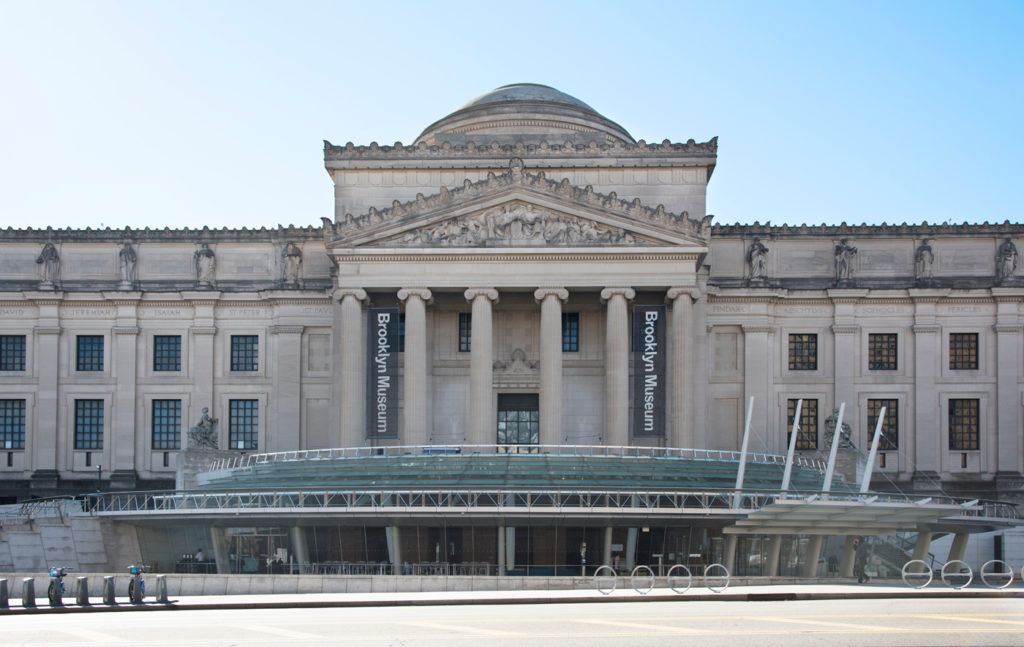Museum Boss Salaries: Reduced but Still an Issue Amid Wider Cutbacks
The compensation packages of museum directors are drawing scrutiny as their institutions try to fill budget holes with cutbacks that have included layoffs and furloughs of lesser-paid staffers.
As originally seen in The New York Times on August 18, 2020
Many of New York’s museum leaders have taken pay cuts to offset some of the financial damage their institutions are suffering from their Covid-related closures. But at a time when museums are facing their most severe financial downturn in decades, one that has led some to make painful cuts in staff, critics are questioning whether such reductions go far enough.
At the Guggenheim, the director, Richard Armstrong, took a 25 percent cut in pay. But the group A Better Guggenheim — made up of current and former staff members — in a July 23 Instagram post called on Mr. Armstrong, who earned $1.4 million a year in compensation in 2018, to take a deeper cut “instead of continuing to target the museum’s most vulnerable staff” with furloughs.
In June, after the Asia Society considered furloughs that were later avoided, staff members complained in a letter to the board that the 50 percent pay cut taken by its president and chief executive, Josette Sheeran, who earned $937,000 in compensation last year, was insufficient.
A union leader who represents workers at the New Museum and other institutions said in an interview that it is difficult for museum workers to stomach layoffs when executive salaries still run so high.
“When institutions shed these people,” said Maida Rosenstein, president of the union, Local 2110, “and say, ‘We can’t help it because there is a pandemic and we’re not open and we’re losing all of this revenue,’ and then the top guys continue to be in place and earning like a million dollars a year, it’s very concerning.”
The pay disparity issue, already simmering in the museum world last year, has bubbled up since the pandemic as critics question whether museums should further curtail executive pay and draw on their endowments to keep their staffs employed.
Though museum leaders run large organizations that mirror corporations in their complexity, they are also charities, buoyed by special tax breaks that carry with them additional scrutiny, especially when it comes to compensation.
The salaries of museum directors have to be listed on the institution’s tax returns, which show that leaders of a half-dozen major institutions in New York received annual pay packages last year of $1 million or more, even as low-level employees earn as little as $35,000.
“The differentials are too large,” said James Abruzzo, a nonprofit compensation consultant. “Boards need to take a more valued approach to how their institutions treat their people.”
Of particular note in a year when the killing of George Floyd has led museums to confront accusations of institutional racism, many of the staff reductions have come from the lower-paid ranks where largely white-led institutions have traditionally displayed the most diversity in hiring.
At the Metropolitan Museum of Art, for example, where the work force is 43 percent nonwhite, some 48 percent of the 400 staff members cut since March have been people of color.
Daniel H. Weiss, the Met’s president and chief executive, who earned $1.25 million in compensation last year, has taken a 20 percent pay cut this year. His compensation had risen by 24 percent from 2018 to 2019, after he became C.E.O. and took on increased responsibilities as the top boss of a museum with total expenses of $491 million last year.
At Asia Society, the executive vice president, Tom Nagorski, said that 20 percent of Ms. Sheeran’s compensation is based on fulfillment of annual performance goals. He noted that the organization received government loans that allowed it to avoid eliminating workers.
Even before the pandemic, the issue of pay disparity had been percolating at cultural institutions. Last year, arts workers across the country began to anonymously post their job titles and salaries, alongside those of museum officials, in a spreadsheet meant to call attention to the issue.
“We have an inequity in our compensation schemes,” said Michael M. Kaiser, chairman of the DeVos Institute of Arts Management at the University of Maryland, who has run several major arts institutions. “Where there is a disproportionate salary for the leader of large institutions, it arises from the fact that boards are so nervous, because they don’t know how to run these institutions themselves.”
To be sure, good arts executives are considered hard to find, so successful ones tend to be handsomely rewarded. In addition, many trustees are also highly compensated chief executives, for whom the pay level of a museum director may not register as significant compared to their own earnings.
Executive Pay at New York City Museums
Many of the top bosses received compensation packages last year of more than $1 million, as indicated on the most recent tax filings by the museums. Many also took pay reductions this year in response to budget gaps created by the pandemic.
1. Glenn D. Lowry, Museum of Modern Art
Total compensation: $5.1 million*
Total expenses: $267 million
2. Ellen V. Futter, American Museum of Natural History
Total compensation: $1.8 million
Total expenses: $215 million
3. Richard D. Armstrong, Solomon R. Guggenheim Foundation
Total compensation: $1.4 million**
Total expenses: $74.6 million
4. Daniel H. Weiss, Metropolitan Museum of Art
Total compensation: $1.25 million
Total expenses: $491 million
5. Adam D. Weinberg, Whitney Museum of American Art
Total compensation: $1.1 million
Total expenses: $89.4 million
6. Josette Sheeran, Asia Society
Total compensation: $937,000
Total expenses: $32.7 million
7. Ian Wardropper, The Frick Collection
Total compensation: $851,000
Total expenses: $41.9 million
8. Lisa Phillips, New Museum of Contemporary Art
Total compensation: $768,000
Total expenses: $17.5 million
9. Louise Mirrer, New-York Historical Society
Total compensation: $715,000
Total expenses: $43.3 million
10. Colin B. Bailey, Morgan Library and Museum
Total compensation: $648,000
Total expenses: $27.7 million
Source: Museum federal tax returns
*Compensation includes one-time retirement plan payout earned in earlier years.
**Compensation for 2018.







